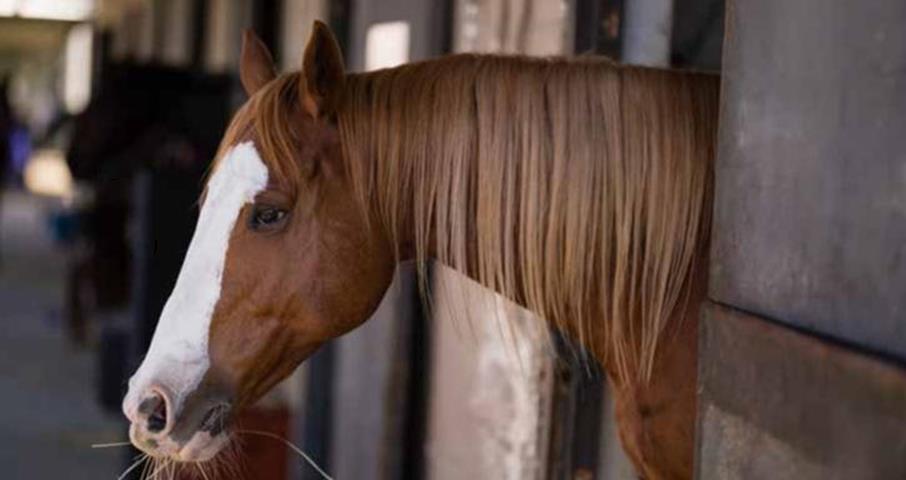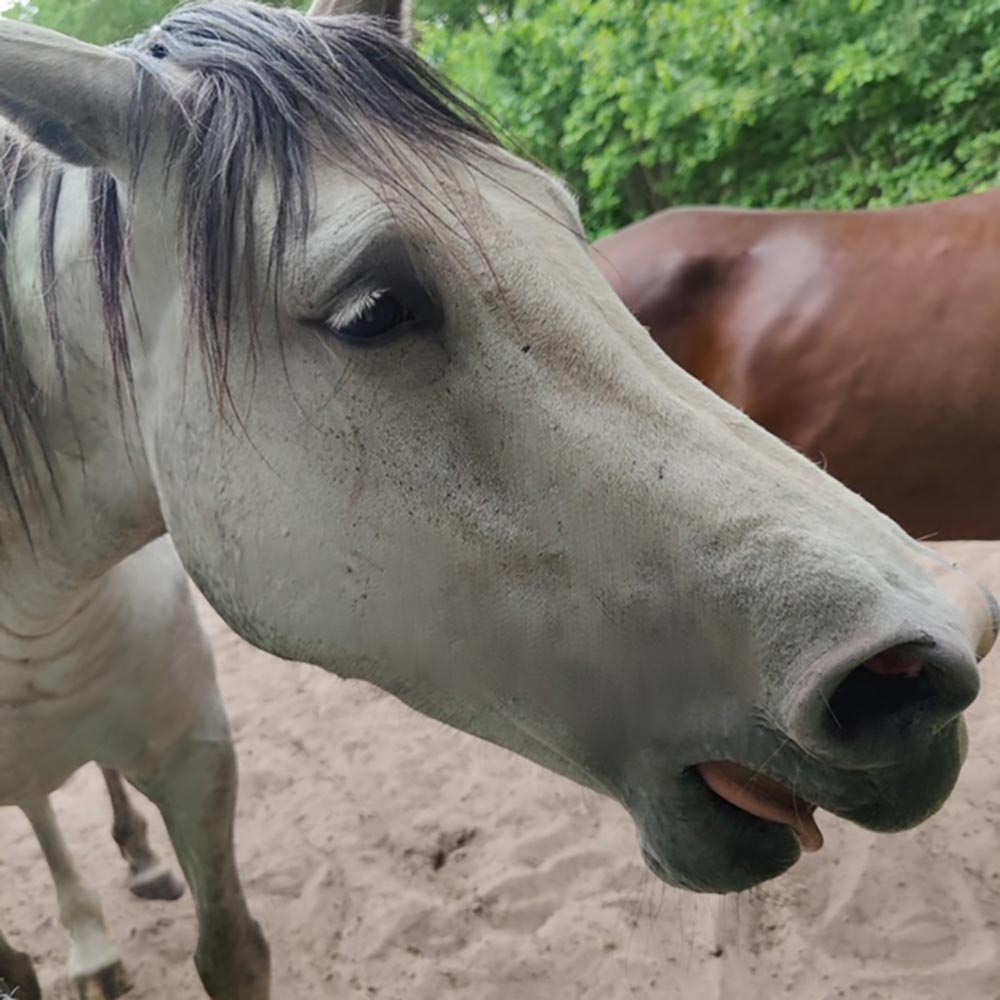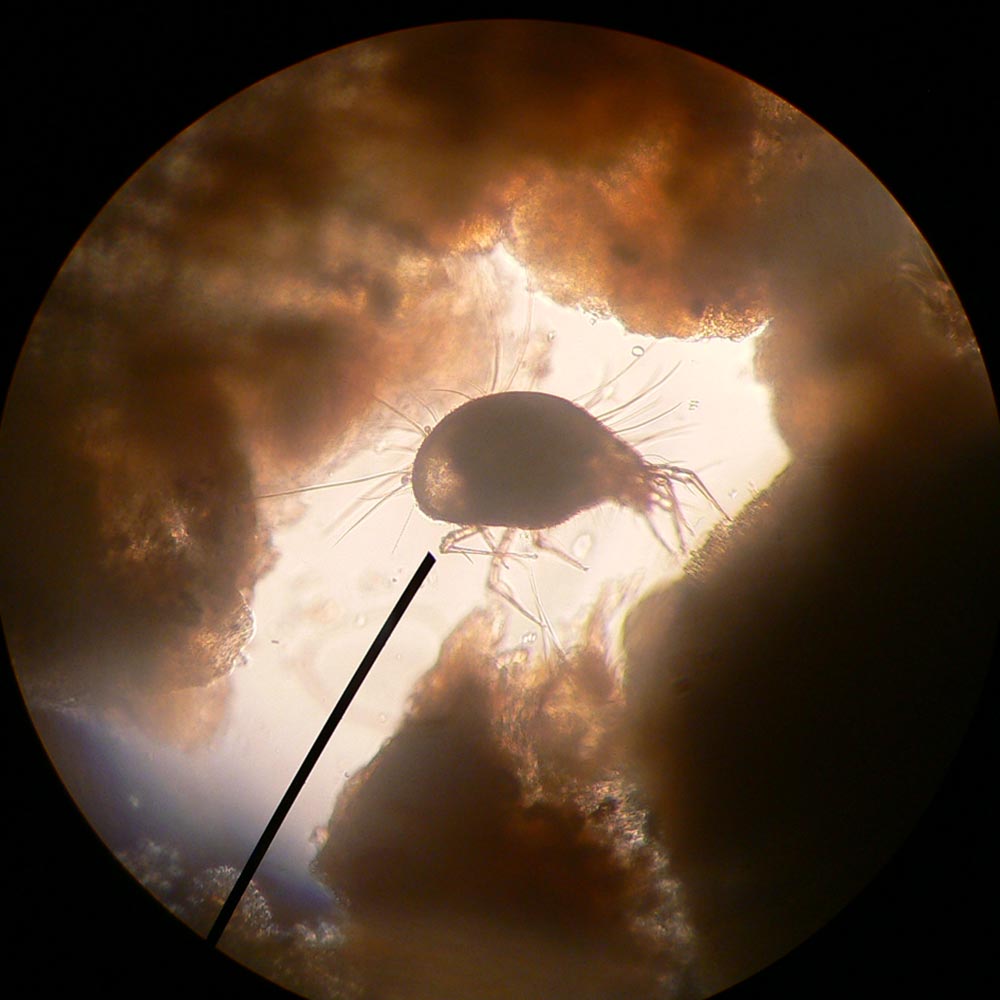The nomenclature of equine respiratory diseases has recently been revised. The RAO (recurrent airway obstruction; formerly called COPD chronic obstructive pulmonary disease), the IAD (inflammatory airway disease) and SPAOPD (summer pasture-associated obstructive pulmonary disease) are now referred to as “equine asthma (syndrome)” (Bond et al., 2018). Equine asthma is a lung disease with characteristic features of hypersensitivity, similar to some forms of human asthma. It is associated with neutrophilic bronchoalveolar inflammation, bronchospasm and excessive mucous secretion, being an ideal model for studying human asthma.
IAD: mild to moderate disease in the context of the equine asthma syndrome, reversible and with a better prognosis!
RAO: same disease as COPD but less precisely defined. The term RAO is more widespread in English-speaking countries.
The old term “COPD” is no longer used because it comes from human medicine and has different pathogenesis (smoking and harmful gases).
It is suggested to use mild, moderate and severe equine asthma and no longer use the other sub-terms.
An incidence of equine asthma of >14% has been reported in the equine population. Clinical signs are triggered by an allergic reaction to a wide variety of allergens, including mould spores in hay and straw dust, pollen, house-dust mites and storage mites present in barn dust and animal feed. Depending on the presence of the allergens involved, the disease can occur seasonally or all year round. Older stabled horses (>6 years) are primarily affected, whereby, among other things, barn climate, bedding material and type of feeding are viewed as factors involved in allergies. In winter, the air in the barn is especially polluted with fungal spores, and respiratory allergies occur with particular frequency at this time of year. In rare cases, specially in grazing animals, equine asthma occurs only seasonally. This problem is known as SPAOPD (summer pasture-associated obstructive pulmonary disease) the cause of which is a pollen allergy.
The incurable nature of equine asthma often leads to euthanasia or the early retirement of the affected horses. Targeted allergen avoidance is undisputedly the best therapy for allergic processes. A study saw that lung function could be improved just three days after establishing an environmental management system for the animals concerned. However, in many cases, a successful change in the keeping conditions of affected animals is not consistently feasible for a wide variety of reasons. Researchers examining the relationship between RAO and IBH (insect bite hypersensitivity, sweet itch) concluded that horses with RAO are at increased risk of developing IBH.
Diagnosis
For a correct diagnosis, a detailed anamnesis and clinical examination of the animal are necessary, determining the list of differential diagnoses, which are confirmed or excluded with the help of diagnostic tests. Bronchoalveolar lavage (BAL) makes a valuable contribution to the diagnosis of respiratory diseases. A definitive diagnosis of the allergy and, above all, identifying the allergens involved is the prerequisite for a promising therapy with a lasting effect.
Allergic reaction to environmental allergens (pollen, house dust mites, storage mites, moulds, etc.) is characterised by the overproduction of IgE. Serological allergy tests assess blood levels of specific IgE against different allergens. A direct relationship between significantly elevated anti- mite IgE levels in RAO horses in contrast to healthy horses has been reported.
Before taking the blood sample, the withdrawal times for medication (especially glucocorticoids, including topical and inhaled) must be observed.
Treatment
The ideal allergy treatment is undoubtedly avoiding the offending allergens, but this is usually not feasible. Best results would be achieved with a change of location of the animal (other parts of the country, alpine pastures, sea level, open stable versus box housing, etc.). It is a significant change in the keeping conditions of the animals, which is time-consuming and cost-intensive. In most cases, allergen avoidance cannot be guaranteed.
Alternatively and frequently, drugs (e.g., glucocorticoids) are used to treat the clinical picture. Meaning that the clinical signs are controlled, but the cause itself is not treated.
Allergen-specific immunotherapy (ASIT, hyposensitization) is an effective treatment option for many animals with allergic diseases. This treatment has been known since the 19th century. Based on the allergens to which the animal has shown positive reactions in the allergy test, an individual therapy solution is created especially for this horse. In principle, ASIT is always recommended when clinical signs persist for more than four months of the year. In seasonal events, it is recommended to start treatment at the end of the season. However, allergy testing should be done during or shortly after allergy season.
- Picture Credits: envatoelements
-
Fig. 1: Horse coughing
Picture Credits: Maite Bolumburu
-
Fig. 2: pollen
Picture Credits: envatoelements
-
Fig. 3: Microscopic image of a storage mite
Picture Credits: Dr. Regina Wagner
-
Fig. 4: Horse on the pasture
Picture Credits: envatoelements
-
Fig. 5: ASIT solution (starter set)
Picture Credits: Laboklin
- Fig. 6: ASIT success
The selection of allergens should be based on the clinical picture.
They are selected for the ASIT:
-
- allergens with a positive reaction in the allergy test (regardless of the intensity of the reaction)
- that correlate with the history and clinical signs
- that are present in the animal‘s environment
- the number of allergens to include is limited, so in cross-reacting allergens, the representative allergen of the group or a mixture of cross-reacting allergens is used
At the beginning of therapy, medical treatment is usually necessary to control respiratory signs. If medical treatment is used, a treatment at minimal dosage that alleviate the clinical signs is advisable to be able to adapt the therapy plan.
The administration of subcutaneous immunotherapy begins at weekly intervals and progresses to monthly injections. Initially the therapy begins with a low dose of allergens extract which is increased until reaching the maintenance dose. The goal is to develop tolerance to injected allergens so that clinical signs triggered by an overreaction of the immune system disappear. ASIT is the only therapy that intervenes in the primary origin of the disease. In veterinary medicine, if the response to this therapy is good, it is recommended to continue it for life since allergies are not curable, and experience has shown that after discontinuation of treatment, the clinical picture usually reappears after 1 to 2 years. The veterinarian should monitor the animal regularly, as adjustments in the injection interval and/or the dose may be necessary.
For the owner, the success of the therapy is crucial. Our studies in horses with allergic respiratory diseases show a clear improvement in the clinical picture in more than 80% of the patients included. If therapy was started within the first two years after the first respiratory signs appeared, the chances of success increased to 86%. ASIT is an extremely promising therapy, especially for horses with respiratory problems, which often become impossible to ride due to this disease.
| Clinical picture | ASIT success |
| Respiratory disease | 80% |
| ASIT within 2 years of respiratory disease | 86% |
In addition, it should be noted that all allergic events have a genetic component, i.e. affected animals should be excluded from breeding, which is particularly important for breeding stallions with a high number of offspring.
Dr. Regina Wagner









